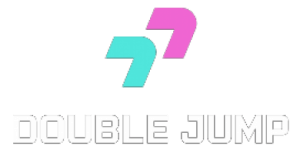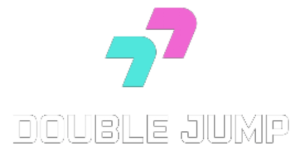Kickstarter is a crowdfunding platform that allows entrepreneurs, inventors, and creative professionals to raise funds to get their projects off the ground. There can be several advantages to using Kickstarter, such as
-
- easy access to capital
- creating a community of supporters
- the ability to validate products or services before investing a large sum of money
However, there are also some drawbacks to using the platform, such as
-
- 5% fee
- not a good fit for all ideas
In this article, we will discuss the Kickstarter pros and cons and how to make the most of the platform.
Overview of Kickstarter
Kickstarter is an online crowdfunding platform for creative projects and ventures. On the Kickstarter website, users can create a project page to finance their product or service with donations or pre-orders from backers. Creators of successful projects receive their pledged funds after the Kickstarter campaign, minus a 5 percent fee for hosting and processing payments.
Often, when entrepreneurs consider whether to use Kickstarter, they may be unfamiliar with the platform’s features and key considerations. There are pros and cons of running a crowdfunding campaign on Kickstarter that prospective campaigners should carefully weigh before committing to a project. Generally, people who benefit most from crowdfunding are entrepreneurs in the creative industries who have graphic design skills or the ability to produce enticing rewards for donors. Additionally, those who can ensure a well-executed marketing strategy often have the greatest success on this type of platform. To help understand how Kickstarter works and whether it is right for your venture, it’s important to examine both sides of this increasingly popular funding option.
Pros of Kickstarter:
-
- Creative entrepreneurs can get funding for their projects
- Early adopters of products or services can get special rewards for their donations
- Creators can gain brand recognition and publicity for their products or services
- Entrepreneurs can increase market validation for their project
Cons of Kickstarter:
-
- A 5% fee is taken from successful projects
- Campaigners must have graphic design skills or the ability to produce enticing rewards for donors
- A well-executed marketing strategy is required for success
- Crowdfunding is not suitable for all types of projects
Pros of Kickstarter
Kickstarter is a crowdfunding platform that allows individuals to raise funds for their projects or ideas. It is an effective way to generate financial support for an endeavor and many people have used it to launch successful projects. By using Kickstarter, it is possible to reach a wide audience, receive feedback on your project, and receive funds from supporters.
There are several advantages to using Kickstarter, which include access to a large network, flexibility in design, and the ability to gauge customer interest quickly. Let’s explore the pros of using Kickstarter further.
-
- Access to a large network
- Flexibility in design
- Ability to gauge customer interest quickly
Access to capital
Access to capital is perhaps the main benefit of crowdfunding through Kickstarter. Developing a product often requires funds to bring it to fruition, and having that capital early on helps tremendously. This can be especially beneficial for entrepreneurs who have failed in the traditional route of obtaining a loan from a bank or getting venture capital funding.
Project creators can offer creative incentives for those who donate, and this is often enough motivation for people to get involved. Donations are typically made out of pure enthusiasm for the project, not in anticipation of any returns which eliminates risks associated with angel investors chasing financial gains.
In addition, Kickstarter also serves as an effective marketing tool as word-of-mouth strategies quickly increase awareness about the project because it tends to amplify public sentiment due to its large influence in social media platforms such as Twitter, YouTube and FaceBook. As these networks spread information faster than traditional means such as television or radio ads spread, they significantly help those launching campaigns by stimulating interest with potential investors and buyers alike.
Ability to test the market
One of the best features of using Kickstarter to launch a product or business is the ability to test the market without having to commit a large amount of money upfront. Due to the fact that backers don’t receive products they fund until they reach their funding goals, entrepreneurs can gauge consumer interest before committing resources.
This gives entrepreneurs and inventors an opportunity to determine whether or not a proposed product or idea is viable and whether or not it’s likely to do well without large investments and long production cycles. If consumer interest isn’t high enough, it gives entrepreneurs the chance to make alterations before proceeding with manufacturing.
Furthermore, funds from Kickstarter campaigns come from people who believe in an entrepreneur’s project, so their purchase goes beyond just monetarily supporting them. This allows for customers and potential investors give feedback about the project prior to its launch which can provide invaluable insight into customer needs and desires.
Additionally, successful crowdfunding campaigns create promotional campaigns where customer input is being used as part of marketing initiatives. Not only does this mean entrepreneurs have access to valuable information about their target market but also leads to building relationships with customers from day one which further enhances communication throughout all stages of development.
-
- Testing the market – Gauge consumer interest before committing resources
- Building relationships – Enhance communication throughout all stages of development
- Gaining feedback – Obtain invaluable insight into customer needs and desires
Increased visibility
One of the most significant advantages of using Kickstarter is the increased visibility on offer. Kickstarter can be used to reach large numbers of people who you may otherwise not have access to. By running a campaign, entrepreneurs have the opportunity to raise awareness about their business, product or service and reach audiences both nationally and internationally.
Furthermore, setting up reward packages for backers is a great way to incentivize contributors and encourage people to become part of a more passionate and engaged audience. Additionally, appearing on the platform can bolster your credibility and boost consumer confidence in your product or project.
Cons of Kickstarter
Kickstarter can be a great tool for entrepreneurs and creators to get their idea off the ground. However, it also comes with a few risks that should be taken into consideration. The goal for many Kickstarters is to get as much funding as possible, but this could leave them in a bind if their idea does not gain enough traction.
In this section, we will look into the different cons of using Kickstarter:
-
- High Expectations
- Unrealistic Goals
- Lack of Control
- Risk of Scams
- Unfulfilled Promises
Lack of control
A major downside of Kickstarter is the lack of control over all stages of the project. Creators are responsible for the project idea, design, manufacturing, shipping, and customer service. When campaigns go wrong, backers are usually unable to get their money back directly from Kickstarter. Instead, they may have to contact the creator directly in order to seek a refund. This lack of accountability can cause frustration when projects fail or don’t meet expectations—a situation that backers have very little control over.
Additionally, creators may face difficulty with shipping their product on time due to delays or incorrect shipping estimates. There may be unavoidable issues with fulfillment or backed products not being up to par with expectations; in those cases, it’s usually up to the project creators alone to make things right for their backers.
Without any oversight from a third party platform it can be hard for backers and creators alike to come away feeling satisfied if something unexpected happens during the process.
Finally, a potential pitfall when running via Kickstarter is an inability to build internal connection between customers/backers and brand/product beyond purchase pressure points offered through promotion cycles and buzzy content efforts intended for raising funds.
In other words—while launching a product on Kickstarter can bring some short-term success and buzz around a launch—building lasting relationships with customers (and their respective data insights) beyond that launch has proven difficult for many brands in recent years due solely within the framework that Kickstarter provides as an e-commerce platform.
High competition
Kickstarter is a popular platform for entrepreneurs, but it can also be a highly competitive space. With over 175,000 projects funded to date, the chances of successfully funding your idea are slim. In fact, only around 35% of all Kickstarter projects reach their goal. This means you’ll need to really stand out in order to make your project successful.
You’ll need to have an engaging story and excellent presentation skills in order to get people interested in your idea and pledging their funds to support it. It’s also important that you do some research on other similar projects that have been successful on Kickstarter in order to identify what elements made them successful and incorporate those into your project.
Aside from the challenge of standing out from the crowd, you’ll also need a solid marketing plan and social media presence if you want people to take notice of your project idea.
You’ll need to advertise your campaign relentlessly throughout its run time in order for it have any chance at success. Additionally, many backers are willing only make small pledges; if few enough people back a project with large amounts of money, the campaign may not be able to hit its goal – even if there is overall interest generated by smaller donors.
-
- Engaging Story
- Excellent Presentation Skills
- Research Similar Projects
- Solid Marketing Plan
- Social Media Presence
- Advertise Relentlessly
Risk of failure
One of the major risks of using Kickstarter to fund projects is the potential for failure. While it offers entrepreneurs and innovators an opportunity to secure large investments from a variety of sources, there is no guarantee that a project will be successful. This can be especially true if there is limited visibility or awareness of the project, or if potential backers are unfamiliar with the team behind it.
Additionally, if a project gets off to a slow start and fails to build momentum, it may not generate enough funding to reach its goal.
Another factor that can increase risk is having too many expectations placed on the success of a project. Entrepreneurs should be realistic in their goals, as overestimating how much money their campaign needs can lead to disappointment when it doesn’t reach its target.
Entrepreneurs must also recognize that even successfully funded projects may have unforeseen production challenges or other roadblocks that can delay completion or lead to unexpected costs.
Risks of Kickstarter:
-
- No guarantee of success
- Limited visibility or awareness of the project
- Unfamiliarity with the team
- Slow start
Expectations:
-
- Be realistic
- Unforeseen production challenges or other roadblocks
- No money until after the product is produced and delivered
Conclusion
Kickstarter is an amazing opportunity for creative projects and entrepreneurs to get their ideas off the ground. It provides a wide network of potential backers who are excited to hear all types of ideas. With the right marketing strategy and dedication, Kickstarter can be an invaluable tool in taking your project to the next level.
However, there are some drawbacks: depending on your project and goals, Kickstarter may not be the best place for you. Be sure to thoroughly read up on all the rules and regulations before you launch your campaign as well as consider all other methods of funding or promotion available. Ultimately, it’s crucial that you research and assess whether or not Kickstarter is right for you before proceeding with any plans.
-
- Research and assess whether or not Kickstarter is right for your project.
- Read up on all the rules and regulations before launching your campaign.
- Consider all other methods of funding or promotion available.
With an informed decision making process, combined with a clear strategy and dedicated execution, Kickstarter can be an incredible platform to help bring your dream into reality!
Contact Us
Fill out the form below and we will be in touch shortly! Looking for employment or contract opportunities? Use this FORM instead.
follow us on instagram @DOUBLEJUMPMEDIA



